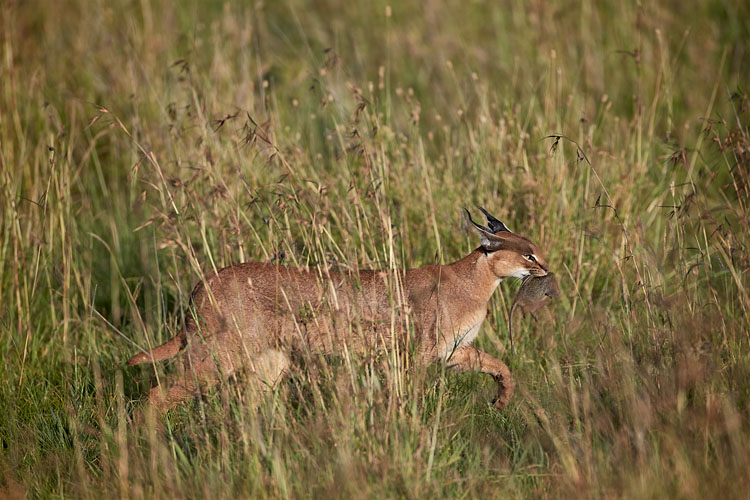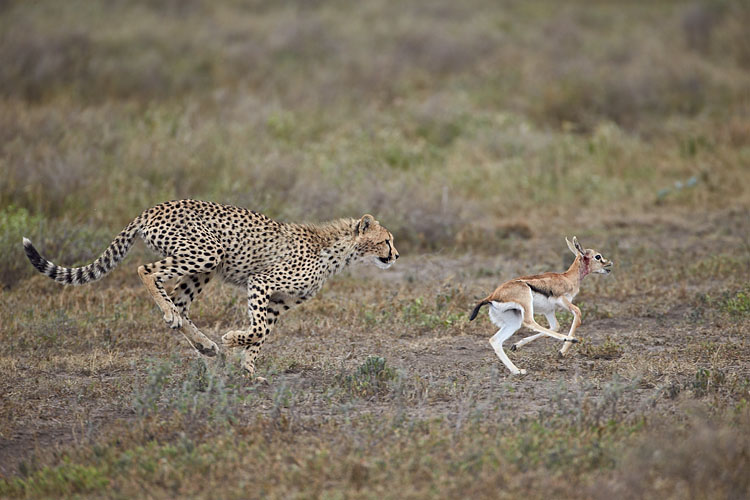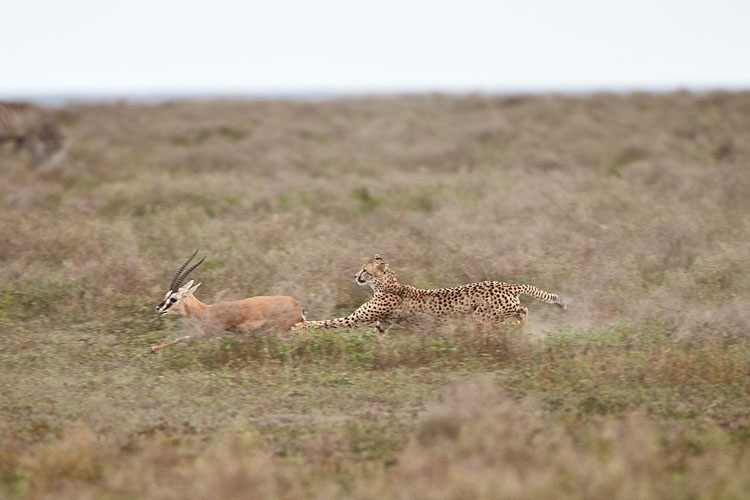February 18, 2013
Caracal and Cheetah in Tanzania
My recent 15-day photo safari in Tanzania was a resounding success! We had much better than average opportunities with Black Rhinocerous, Caracal, Cheetah, and Leopard. Yes, Caracal. It's unusual to even see a Caracal on safari, but we saw four and photographed two! Here are three images that I had the most fun making.
Caracal
Serengeti National Park, Tanzania
Canon EOS 1D X, 500 f4 & 1.4x III, 1/3000 sec, f5.6, ISO 400
Image taken on February 8, 2013.

Cheetah Cub Chase
Ngorongoro Conservation Area, Tanzania
Canon EOS 1D X, 500 f4 & 1.4x III, 1/1500 sec, f5.6, ISO 500
Image taken on February 14, 2013.

Cheetah Chase
Ngorongoro Conservation Area, Tanzania
Canon EOS 1D X, 500 f4 & 1.4x III, 1/750 sec, f5.6, ISO 640
Image taken on February 15, 2013.
Camera Setup
Because I wasn't happy with the images I had taken in Yellowstone with the Canon EOS 7D, I changed my shooting strategy for Africa. I had planned to use the Canon EOS 1D X with a dedicated 1.4x III on the Canon EF 500mm f4 L IS USM and the Canon EOS 1D Mk IV with a dedicated 2x III on the Canon EF 70-200mm f2.8L IS II USM. Then I would use the Canon EOS 7D with a dedicated 1.4x III to swap with the 1D X and its 1.4x III when I needed extra reach. Keeping an extender attached to the body is a great way to keep dust off the sensor when changing lenses, especially in a dusty environment like East Africa. Instead, I kept my second 1.4x III attached to the 1D Mk IV and just swapped the 1D Mk IV with its 1.4x and the 1D X with its 1.4x when I needed some extra reach which was only a handful of times. I swapped the unprotected 7D (no attached 1.4x) with the unprotected 1D X when I needed a lot of extra reach which I only did once.Canon LC-E4N Charger
The new Canon LP-E4N Battery for the Canon EOS 1D X requires the new Canon LC-E4N Battery Charger, and my charger flaked out midway through the safari. It didn't recognise the battery when I plugged it into Bay A and it buzzed and started to smell like melting plastic when I plugged a battery into Bay B. Fortunately, one of my clients had the older Canon LC-E4 Battery Charger which I could use to charge the two Canon LP-E4 batteries that I had along and can use on both 1-series bodies. I was also really glad that I hadn't replaced my old spare LP-E4 with a new LP-E4N. She has lent me the charger so I can continue to use it here in South Africa and I've ordered a new Canon LC-E4N Battery Charger and had it shipped it to her to use when she gets back. We'll swap chargers when I return to the States. Thank you so much Mariann!Lesson learned is that battery chargers can fail and a backup is required. That's the only critical piece of gear for which I don't have a backup on this trip, and I will correct that on future trips.
Categories:
This particular blog entry is www.jameshagerphoto.com/blog/?date=2013-02-18. Visit www.jameshagerphoto.com/blog to view the latest blog entry, and you may click here to create a URL that you can bookmark to go to the latest blog entry.




